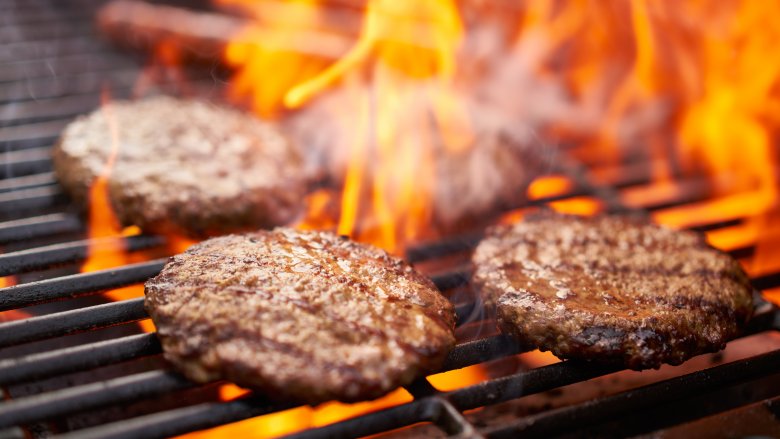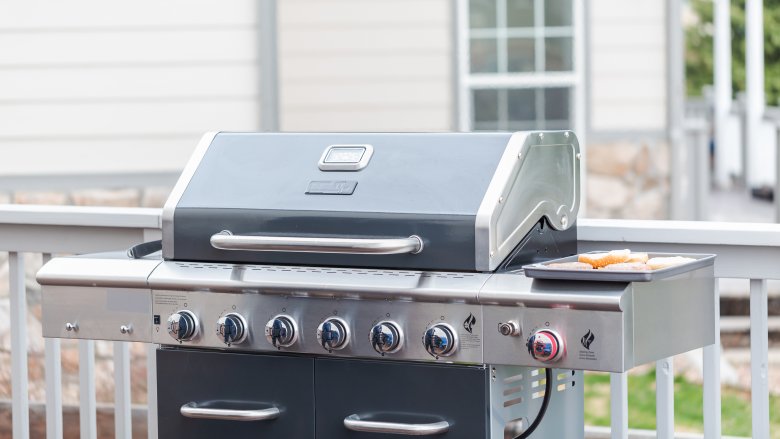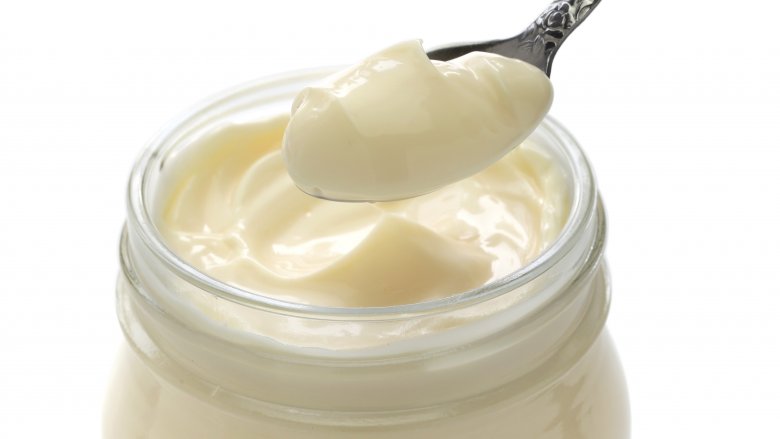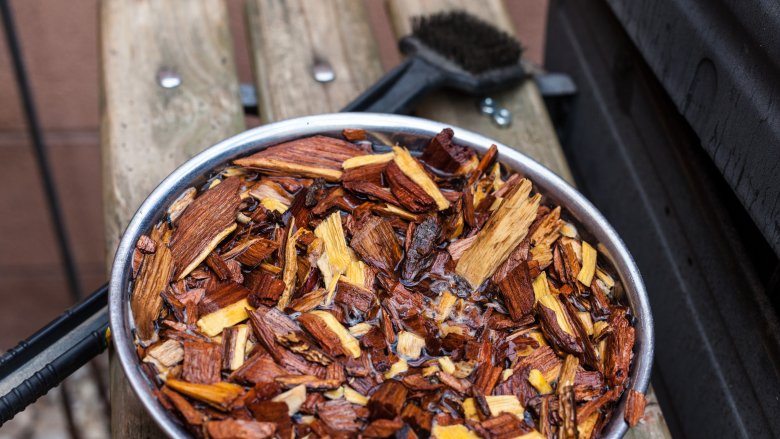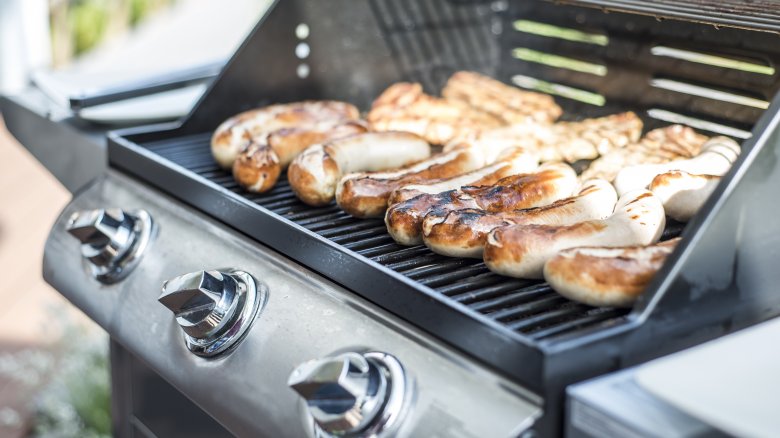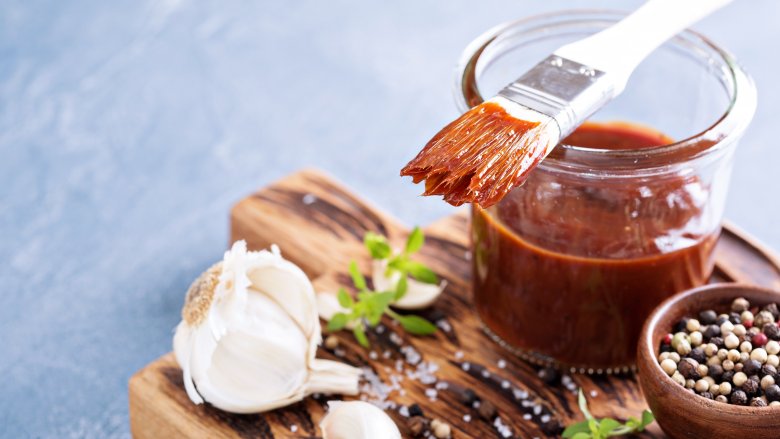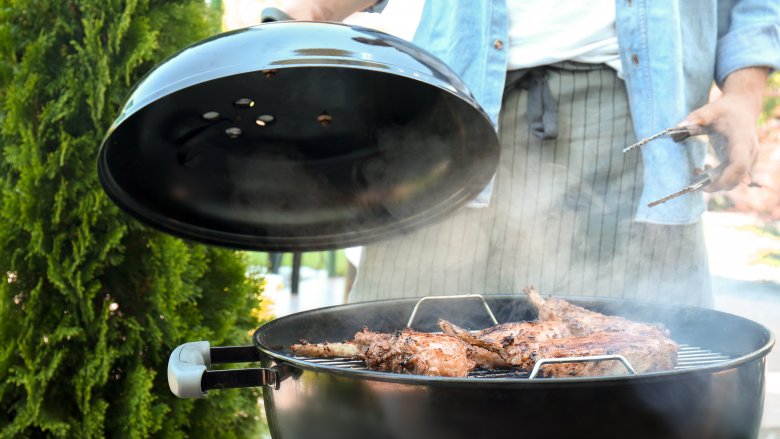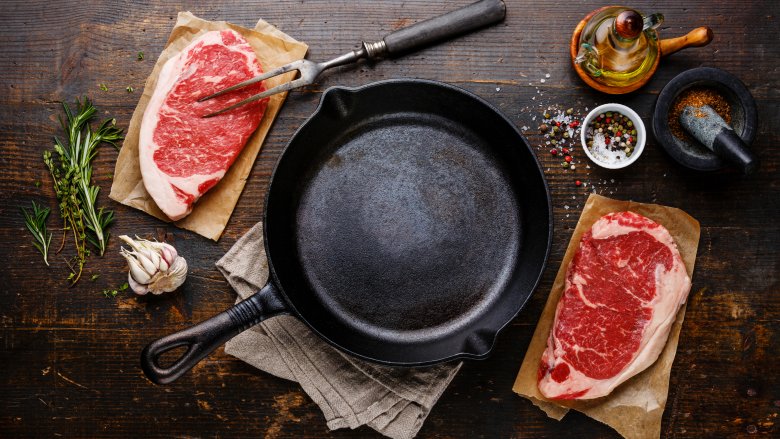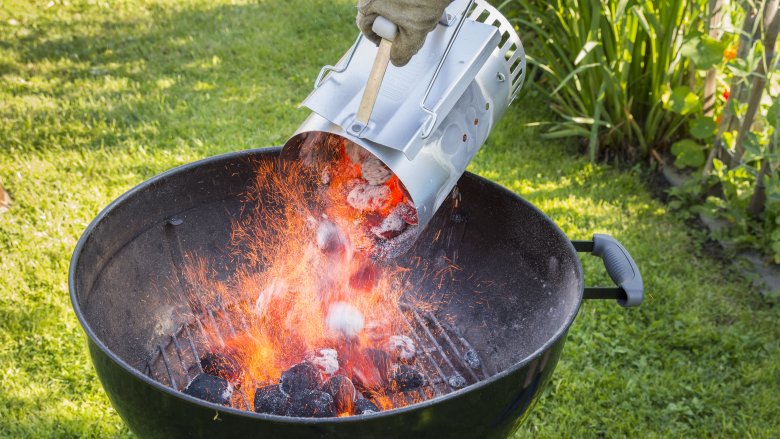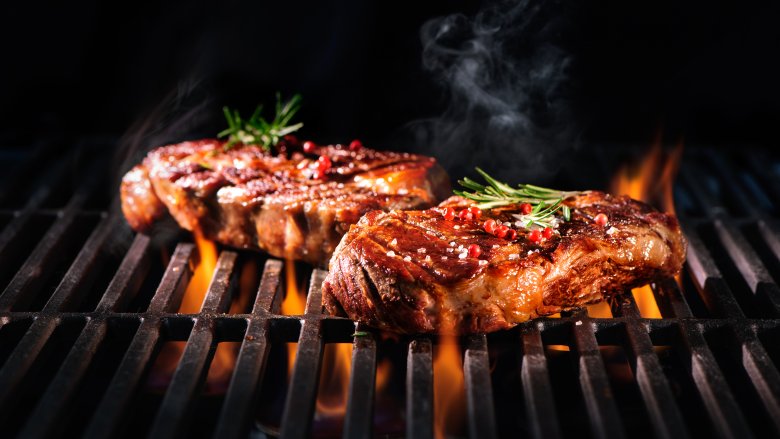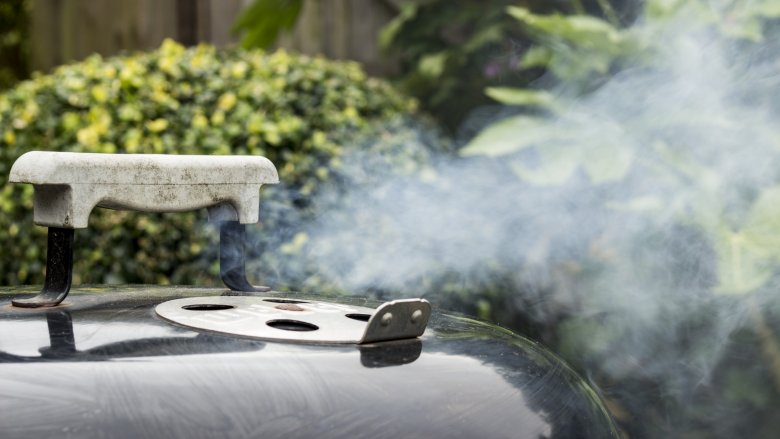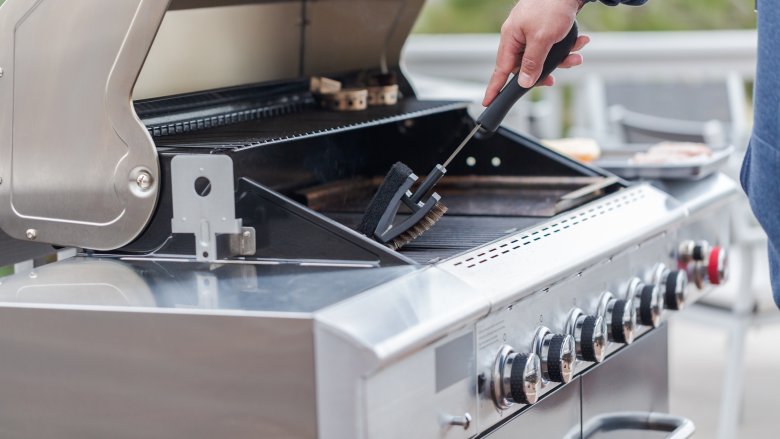Ways You're Using Your Grill Wrong
We may receive a commission on purchases made from links.
For some, grilling season is a glorious time of year, full of perfectly seared steaks and beautifully glazed chicken with just right right amount of char. For others, it's a miserable reminder of their shortcomings, full of steaks that taste like lighter fluid and chicken that is somehow both burned to a crisp and raw at the same time. If you find yourself sympathizing with these grilling fails, you're probably (no, make that definitely) not doing it right.
The good news is that you can become the grill master you always hoped to be — all you have to do is fix the things you're doing wrong — but don't worry, that's not nearly as daunting as it sounds. From barbecue basics to useful hacks and everything in between, here's how to grill the right way. Your food will thank you (and so will all the people in the past that have politely eaten your burnt but raw chicken).
You're starting off all wrong
First things first: To start grilling, you need to turn on the grill. Pretty basic, right? But there are two important things to remember to set yourself up for success.
1. Never turn on a gas grill with the lid closed. Doing so can cause a build-up of propane inside the grill chamber, and we all know that a build-up of gas combined with a flame is not optimal. To avoid this dangerous fireball situation, always open the lid before turning the propane on, then safely ignite the burners.
2. Now that you've got the grill turned on, don't even think about skipping the preheat. A gas grill needs to be preheated for 10-15 minutes to ensure that it's hot enough to properly (and quickly) cook food. Putting food in a cold grill means it will have to stay there longer, opening you up to dry, overcooked meat, and cold grates almost guarantee the food will stick.
You're not using mayo
You read that right: mayonnaise. Where in the world does mayo come into play when you're grilling? According to Meathead Goldwyn, who wrote Meathead: The Science of Great Barbecue and Grilling, you should be using it on your meat in place of oil. Goldwyn says that oiling grill grates is not the way to go — though plenty of others recommend the practice — because the moment the oil hits those screaming hot grates it smokes and carbonizes, neither of which lend desirable flavor to your food and actually causes food to stick more, not less. Instead, he recommends a thin coating of oil on the food itself — the downside here though is that once the oil heats up, it drips right off the meat.
Enter mayonnaise. The mayo, though made up mostly of oil, doesn't run off the meat as quickly, allows spices and rubs to adhere better, and bonus, gives your food a extra little flavor. Who knew?
You're not making a DIY smoker box
Just because you have a gas grill doesn't mean you're destined to smoke-less food. Sure, there are smoker boxes you can buy, but why buy when you can DIY (for a lot less money)? All you need is a small foil pan that will fit between the burners and the grate, a piece of aluminum foil, and wood chips that have been soaked in water.
To make your DIY smoker box, drain the wood chips and place them in the pan, then cover it tightly with foil. Pierce the foil in several places to allow smoke to escape. Remove the grate and place the pan across two burners, then replace the grate. Turn the grill on as usual, and once the pan gets hot enough you'll start to see smoke. You're now ready to cook, and your food will have that delicious wood-smoked flavor that you've been missing with a gas grill.
You're overcrowding
It's tempting to load up the grill when cooking for a crowd — it'll save tons of time in the long run, right? Wrong. It's actually one of the biggest mistakes you can make, and instead of saving time, you might end up losing everything you crammed on there.
Barbecue pro Steven Raichlen explained to People, "You see people covering every square inch of the grill with chicken pieces. If one piece catches on fire they all do, and you have no place to move the chicken, and they burn to a crisp and the fire department gets called. Not a happy end to your barbecue!" Raichlen suggests keeping 25 percent of the grill open so you have the space to move food around as needed. He recommends leaving a burner off on a gas grill, and keeping the charcoal to one side on a charcoal grill, which ensures you'll always have a cool spot when you need it.
You're doing sauce wrong
Remember that chicken we talked about, that's burned to a crisp on the outside, but raw on the inside? The likely culprit is the barbecue sauce, and more specifically, the sugar in the barbecue sauce. Once that sugar hits the hot grill, it will start to burn, which is why heavily coating meat with sauce too early is a bad idea. It might look done, but it's not. On the other hand, brushing it on too late means that the meat won't have time to soak in any flavor — the sauce just sits on top.
So when is the right time to slather on that delicious glaze? About 10 minutes before you pull the meat off the grill. The key here is to apply several thin coatings every few minutes, turning each time and letting the sauce caramelize slightly between applications. This means the food is absorbing the flavor, the sauce isn't burning, and you've added layers of good flavor.
You're using the lid wrong
We all know we aren't supposed to open the oven door when you're baking, but what about the grill? Should the lid be up or down? It turns out that it really all depends on what you're cooking.
According to expert Meathead Goldwyn, there's an easy way to determine what position the lid should be in: If the food is less than 3/4 inch thick, the lid stays up. If it's thicker than that, the lid goes down. Because a closed lid essentially creates a convection oven within the grill, all that trapped heat will cause thinner foods to cook through too quickly, and keeping the lid open gives you a sear without overcooking. With thicker foods, the closed lid traps the heat and gives you both a good sear and allows the grill to get to a higher temperature needed to cook food through to the center.
You're not using it as a stove
We know the grill works great as a grill (duh), but did you know you can also use it as an outdoor stove?
One good reason for using the grill this way is that you can do all your cooking in one spot, rather than running back and forth to the kitchen. Using a gas grill is much like using the gas burners on your stovetop, but you'll want to make sure your cookware is sturdy enough to withstand the higher heat. Cast iron is the perfect option, and less heavy black steel cookware works well for jobs like sautéing veggies, boiling water, or simmering sauces.
Convenience aside, the very best reason to use your grill as a stovetop is the amazing crust you'll get when cooking steaks and burgers in a cast iron pan. Because you can get the pan so much hotter on the grill, meat has no choice but to form that heavenly layer of flavor that's hard to achieve elsewhere.
You're using lighter fluid
Lighter fluid seems like the easiest option to get your coals hot fast, but it actually does little to keep the fire going. It causes a burst of flame, sure, but it quickly dies out, and that only leads to more lighter fluid. At this point there's no way around the overpowering flavor it will definitely impart on your food, no matter how long the coals burn. The better way? A chimney starter, no chemicals needed.
The chimney starter, which works by pulling oxygen up through the coals sitting on top, requires only a little wadded up newspaper and a match. You'll have red hot coals in about 15 minutes — just make sure that they're totally and completely covered in gray ash before you dump them into the grill. If any black remains visible on the coal's surface it means that they're still heating, and you'll have a harder time controlling the temperature.
You've got the heat all wrong
One of the advantages to using a grill is the ability to get it hot, hot, hot — but too much heat can be detrimental. According to Meathead Goldwyn, that penchant for screaming hot heat is one of the classic mistakes people make when manning the grill.
"We grill too hot! High heat causes protein to shrink and get its undies in a bunch and squeeze out juice. Always set up the grill with two zones, one with direct radiant infrared heat, and the other with no direct heat. Push all the coals to one side or turn half the burners off. Cook on the indirect side where gentle smoky convection heat can be kept to about 225 [degrees] and you will get tender juicy meat. At that temp enzymes have time to tenderize and proteins don't shrink," he explained to Tasty Meat. "THEN sear the meat just before removing it over the direct heat, lid open, and flip every minute or two to keep energy from building up on the surface... Called "reverse sear" this technique gives extremely tender and juicy meat, and no more burned chicken skin!"
You don't use the vents
If you're using a charcoal grill but aren't utilizing the air vents, or dampers, you're doing it wrong. You'll find two dampers on a standard grill — one underneath the kettle, and one on the lid — and they're essential when it comes to controlling the temperature inside the grill.
According to Weber, it isn't a huge pile of charcoal that gets a grill screaming hot, it's using the dampers correctly. They recommend keeping the bottom damper fully open, while using the lid damper to control the temperature. By adjusting it from 1/4 open to fully open, you can control the heat from about 250 to 550 degrees. A fully open damper allows a lot of air in, which causes the fire to burn hotter, and will spike at about 450 to 550 degrees. Conversely, closing the damper will cut the oxygen and lessen the fire, and let you get down to the 250 to 350 range.
You're not cleaning it often enough, or correctly
Sorry to be the bearer of bad news, but you really should be cleaning your grill every time you use it. There's a catch though: Don't clean it when you're done cooking. Clean it before you start cooking.
Maybe you're tempted to skip this step altogether — the high heat will burn any leftover food bits off, right? Wrong. Skipping this step allows last night's steak residue to mingle with tonight's salmon filet, and nobody wants that. Plus, it's super easy, so stop being lazy.
All you need to do is take a grill brush to the grates after preheating for about five minutes. The remnants of meals past will turn to ash and fall away with a few swipes of the wire bristles. But why not just do this while the grill is still hot, after the food comes off? Turns out that accumulated coating actually helps protect your grill from rust between uses, so leave it there until you're ready to fire it up again.
